![]()
![]()
All the Tribals were fitted with the Kelvin Depth Sounding device atop the Squid Handling Room based on clues from drawings. The boom used with the sounder was located about 8 feet forward of the roof edge of the Squid Handling Room on the starboard side, beside the Kelvin hoist. Initially the hoist was used to raise and lower a weight in order to facilitate depth measurements, Later in its life, it was used to obtain bathythermograph readings which is explained later on.
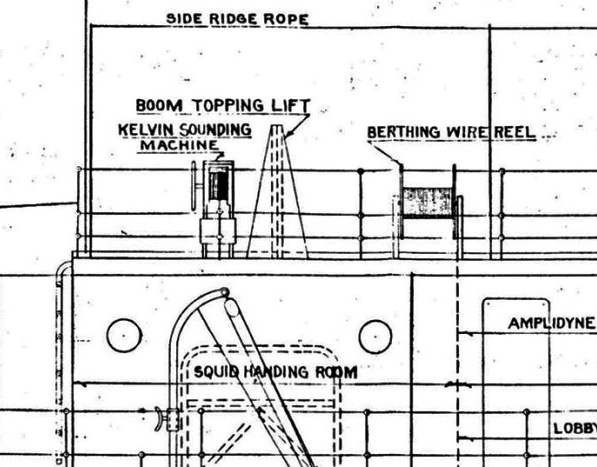 |
| A note on a 1952 HAIDA deck plan
hints that the Kelvin hoist was also used to reel in the bathythermograph
sensor after it reached the target depth. To summarize, a bathythermograph
would be used fo taking temperature readings. A plumb (a 6 pound
weight) was used when depth sounding.
It is not known how much usage the device had as a depth sounder considering that the ship was fitted with the British Type 761 depth recorder and later on , the AN/SQS-501 bottom finding set. |
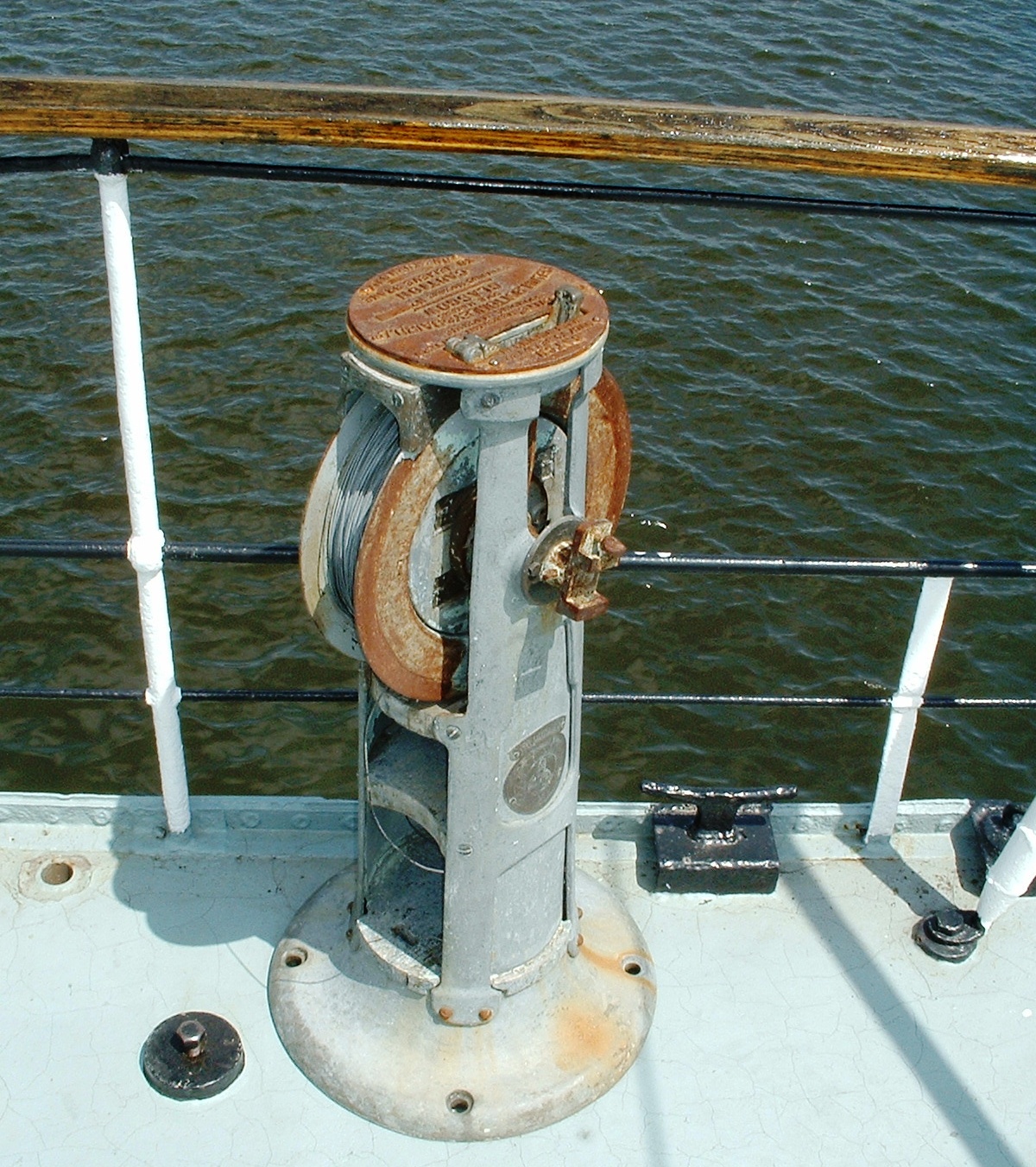 |
| The above device, part of HAIDA's exhibits,
is a Kelvin "Kelvite" depth sounder. It was not an original
fitting but its doing a favourable job as a stand-in for the real artifact.
Missing are the hand cranks for the reel , the plumb (weight) and possibly
the hoist motor.
The exact model used on HAIDA is not known but it is believed to be the Kelvite Mk IV motorized version whose reel contained 100 (?) fathoms of wire rope. (Photo by Jerry Proc) To conduct an accurate sounding survey, the ship was required to steam along a pre-determined track taking soundings at regular intervals. In uncharted waters this could be dangerous due to the presence of unknown rocks, reefs and coral outcrops. A good lookout all round was required and in uncharted water the ship would anchor for the night rather than risk grounding. |
 |
| It is believed that HAIDA was originally fitted with the motorized version of the depth sounder. The original position of the soumder is not known at this time. It was however, relocated to the roof of the Squid Handling compartment once that area was erected. (Image courtesy Submerged.uk.co.uk web site) |
 |
| Just for comparison, this was the hand cranked version of the Mk IV depth sounder. Between 1903 and 1906, Lord Kelvin worked with the Royal Navy to develop the Kelvite Mark IV Sounding Machine specifically for use on fast moving ships. This was adopted by the Royal Navy and was still being produced with only minor modifications in the 1960s. |
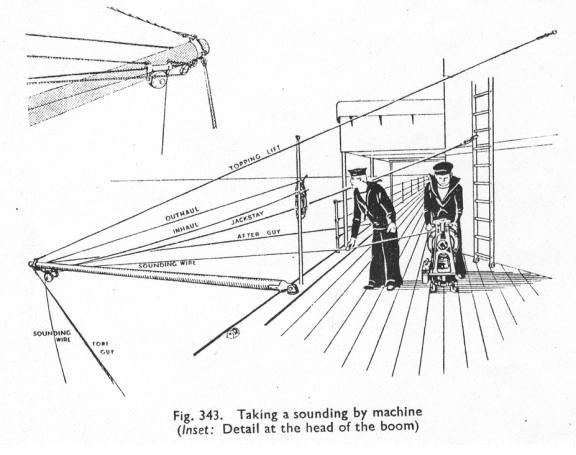 |
| Using the depth sounder - a boom was rigged out over the shipís side to allow the plumb and wire to be paid out to measure the sea depth. The sounder was manned by a crew of three - two to work the unit and one for relief. Only two crew are pictured. |
| A bathythermograph sensor.
(Photo via Wikipedia)
The bathythermograph, or BT, is a small torpedo-shaped device that holds a temperature sensor and a transducer to detect changes in water temperature and depth down to approximately 285 meters (935 feet). The depth is a function of the length of the wire rope towing the BT. Lowered by a small winch on the ship into the water, the BT records pressure and temperature changes on a coated glass slide as it is dropped nearly freely through the water. While the instrument is being dropped, the wire is paid out until it reaches a predetermined depth, then a brake is applied and the BT is drawn back to the surface. Because the pressure is a function of depth, temperature measurements can be correlated with the depth at which they are recorded. The BT data collected from various ships was sent to a central collection point where it was made available to submarines. By monitoring variances, or lack of variances, in underwater temperature or pressure layers, while submerged, the submarine commander could adjust and compensate for temperature layers that could affect sonar accuracy. This was especially important when firing torpedoes at a target based strictly on a sonar contact. Thermal layers reflect a sonar beam exactly like a prism does to light. In Marc Milnerís book "The U-boat Hunters ", he confirms that during the late war period, daily bathy measurements were taken by senior officers' on RCN ships and sent to St Andrews, Newfoundland for study and inclusion into a database. The readings would have been for the north Atlantic Ocean. In 2013, the Canadians took over 700 readings. Combined with with all the other countries, there were some 17,000 readings taken. It is most likely that the Kelvin Depth Sounder hoist was used almost exclusively for taking bathythermograph readings. |
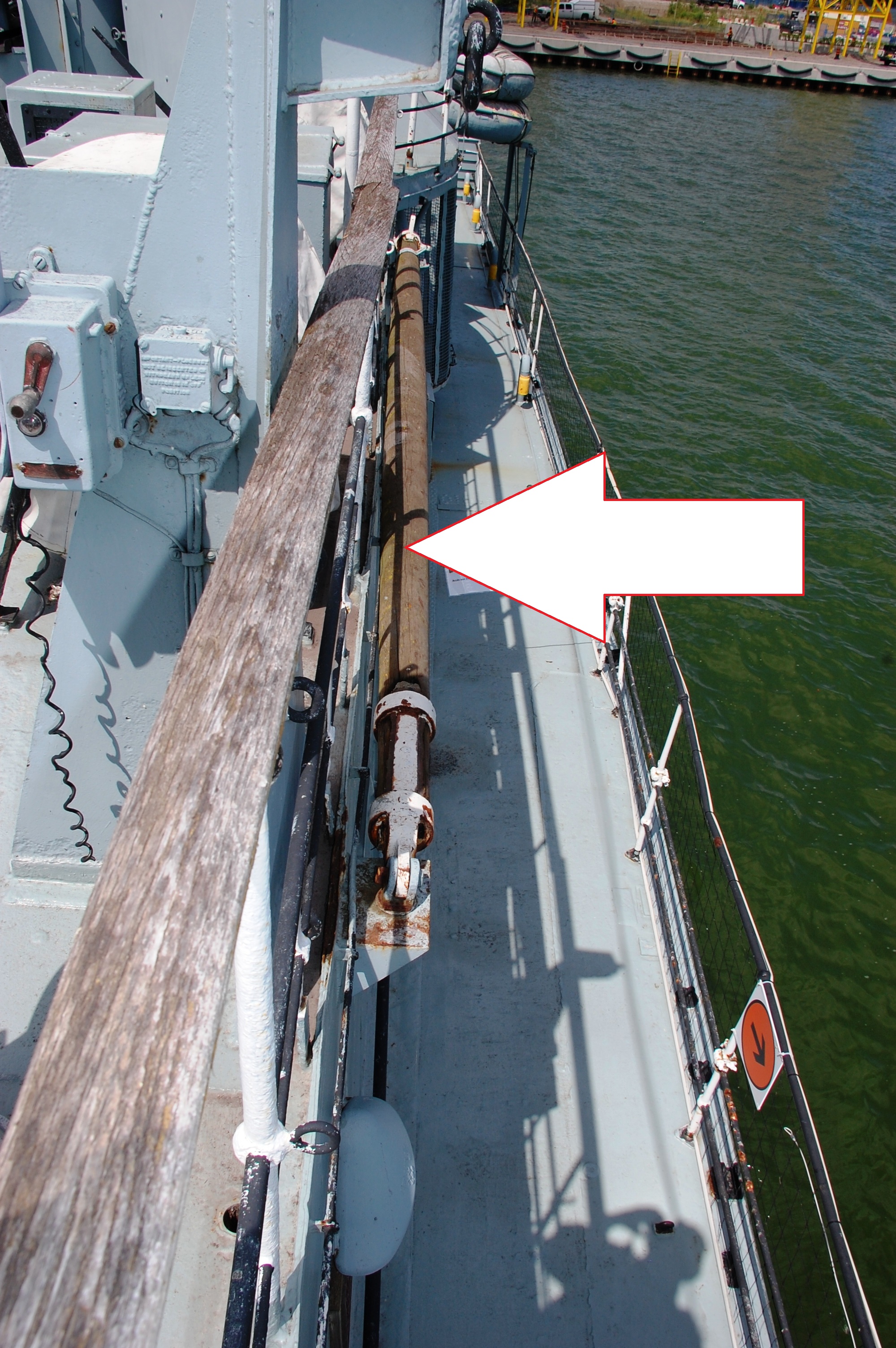 |
| The bathythermograph was swung over the side using this boom. The first four feet are needed just to clear the deck. The rest of the length is to get the torpedo as far away from the props as possible. There was a large diameter pulley at the end of the boom, about 12 inches in diameter. The wire rope from the reel hoist passed through the pulley. |
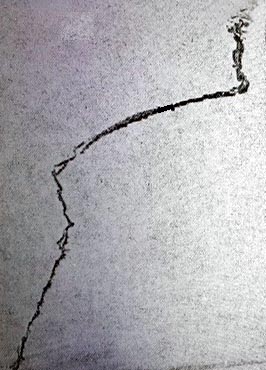 |
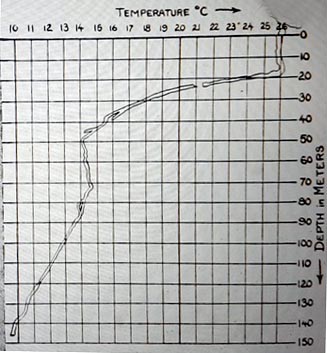 |
| This is how the slide might have looked after a "bathy" reading was obtained. Shown here is a double trace - one being the descent and the second trace, the rise. A key test of accuracy is for these two lines to follow a nearly identical track which is the case here. Any significant divergence could indicate a problem with the torpedo. (Woods Hole Oceanographic Institute) | Here, a grid with temperature and depth markers, has been superimposed over the same slide. Now the trace becomes more meaningful. In the USN, a small projector with a calibrated screen could be used to "read" the slides. The BT data collected from various ships was sent to a central collection point where it was made available to submarines. (Woods Hole Oceanographic Institute) |
Sept 7/21